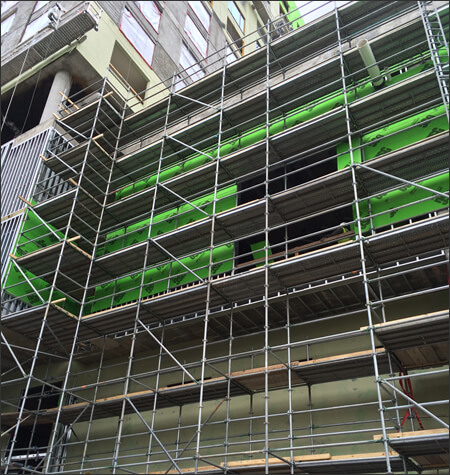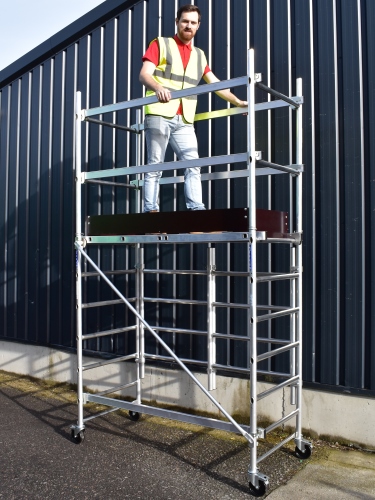Stairway Access Scaffolding: Combining Security with Ease
The Evolution of Scaffolding: Past, Present, and Future =======================================================
The development of scaffolding covers ancient bamboo frameworks to modern-day safety guidelines and innovative innovation. From cutting-edge methods in the past to the fostering of commercial improvements during the Industrial Transformation, scaffolding has actually constantly advanced. The emphasis on security standards, consisting of individual protective devices and advanced guardrail systems, has actually substantially boosted building website security. With the integration of robotics and automation, scaffolding procedures are coming to be much more efficient and error-free. Take into consideration the use of sustainable products and automation modern technologies for a look right into the future patterns forming the scaffolding sector.
Old Scaffolding Methods

Just how did ancient worlds construct huge structures using primitive tools and products?
Bamboo frameworks and rope platforms were two key elements in the ingenious scaffolding methods used by ancient civilizations. Bamboo, known for its strength and adaptability, was a preferred selection for scaffolding because of its wealth in lots of regions. It was utilized to produce tough structures that could support employees and materials throughout building and construction.
Rope systems were one more important part of ancient scaffolding techniques. By weaving ropes together in complex patterns, ancient home builders could create secure systems that could be quickly readjusted and moved as needed. These systems permitted employees to accessibility hard-to-reach locations of frameworks and offered a stable surface area for them to deal with.
Together, bamboo frameworks and rope systems allowed ancient civilizations to build remarkable structures and monoliths that have withstood the examination of time. These very early scaffolding strategies laid the structure for the innovative methods that would later on be established during the Industrial Transformation.
Industrial Revolution Innovations
During the Industrial Revolution, improvements in design and metallurgy reinvented the method scaffolding was utilized in building and construction projects. The intro of steam-powered systems marked a considerable shift in the industry, enabling workers to gain access to greater elevations with boosted efficiency and security. These systems, frequently furnished with mechanized lifters, allowed construction workers to transfer heavy products and devices effortlessly, simplifying the building procedure.
Steam-powered systems came to be essential in the building of large-scale structures such as manufacturing facilities, bridges, and high-rise buildings. The capability to vertically move employees and products quickly and firmly transformed the landscape of building sites throughout this age. With mechanized lifters assisting in the training and positioning of scaffolding components, the assembly and disassembly processes ended up being more convenient and much less labor-intensive.
Modern Safety Specifications
In modern building and construction practices, adherence to vital contemporary safety and security requirements is extremely important to ensuring the health of employees and the successful conclusion of projects. Safety guidelines have significantly progressed over the years to deal with possible hazards in building and construction sites. These regulations mandate using individual safety devices, autumn defense systems, normal safety training, and website assessments to minimize risks and advertise a safe and secure working environment.
Furthermore, devices advancements have played a crucial role in improving security criteria in scaffolding. Technologies such as innovative guardrail systems, anti-slip surfaces, and boosted stability attributes have actually added to lowering crashes and injuries on building and construction sites. Furthermore, the development of light-weight yet long lasting products has not just enhanced the effectiveness of scaffolding but likewise enhanced employee safety by decreasing the dangers related to dealing with heavy devices.
Technological Advancements in Scaffolding
The integration of innovative technologies in scaffolding systems has revolutionized the building sector, boosting both performance and precaution on worksites. Robotics integration and digital surveillance have played a crucial duty in transforming traditional scaffolding practices. Here are some key points to think about:
Boosted Safety and security: Robotics assimilation allows for accurate and computerized setting up of scaffolding frameworks, lowering the threat of human mistake and potential crashes. https://hillingdonscaffolding.co.uk/index.html
Real-time Tracking: Digital keeping an eye on systems give managers with online updates on scaffolding conditions, enabling quick feedbacks to any type of concerns that may occur throughout construction.
Boosted Effectiveness: Robotics can work relentlessly and constantly, bring about much faster assembly and taking apart of scaffolding, ultimately speeding up the total building and construction procedure. scaffolding erection
Cost-effectiveness: While initial investment in sophisticated innovations may be greater, the lasting benefits of raised performance and safety and security cause cost financial savings for building companies.
Future Trends in Scaffolding
As the construction sector continues to advance, the future of scaffolding is being shaped by cutting-edge products and designs. Lasting materials are ending up being significantly common in scaffolding construction, driven by an international press towards eco-friendly practices. These products, such as bamboo, recycled steel, and bio-based composites, offer both stamina and eco-conscious advantages, decreasing the general ecological influence of building and construction projects.
Additionally, automation assimilation is a vital trend expected to transform the scaffolding industry in the coming years. Automation modern technologies, consisting of robotics and AI-driven systems, are being established to enhance scaffolding assembly procedures, enhance precaution, and improve total effectiveness on construction websites. By integrating automation into scaffolding methods, firms can enhance resource use, decrease mistakes, and increase performance.
Often Asked Concerns
What Are one of the most Common Products Utilized in Scaffolding Building Throughout Background?
Throughout background, scaffolding building and construction has depended on diverse materials such as timber, bamboo, and steel. Material developments have actually enhanced safety and performance, while construction techniques have actually advanced to support architectural marvels, showing historic developments.
Exactly How Did Economic Elements Influence the Advancement of Scaffolding Techniques Throughout Different Amount Of Time?
Financial impacts played a pivotal duty in shaping scaffolding methods over time. As monetary landscapes shifted, so did the need for cost-efficient solutions and safety measures. Technical improvements also played a crucial role, driving innovation and performance in scaffolding building and construction techniques.
Can You Offer Instances of Famous Historical Frameworks That Utilized Ingenious Scaffolding Methods?

Cutting-edge frameworks throughout history, like the Great Pyramid of Giza and the Colosseum, employed groundbreaking building and construction strategies. These renowned sites used cutting-edge scaffolding approaches to support their construction, showcasing the resourcefulness of old engineers.
Just How Do Cultural Distinctions Impact the Design and Use of Scaffolding in Different Areas All Over The World?
Social impacts play a substantial duty in the layout and use scaffolding, bring about local adjustments that think about standard structure techniques, materials accessibility, and safety and security policies. These differences shape scaffolding techniques worldwide.
What Function Did Organized Labor Play fit Safety And Security Laws and Practices Within the Scaffolding Industry?
Organized labor have historically played an essential function fit security guidelines and practices within the scaffolding market. By promoting for employee rights and promoting enhanced safety and security criteria, they have actually greatly influenced the advancement of much safer scaffolding strategies.
Verdict
In summary, scaffolding methods have actually established significantly in time, from ancient methods to contemporary security requirements and technical developments.
The future of scaffolding is likely to continue to be shaped by technology and improvements in innovation, with a focus on boosting safety, performance, and sustainability in construction techniques.
As the building sector remains to develop, scaffolding will certainly play a critical duty in sustaining the advancement of infrastructure and structures around the globe.